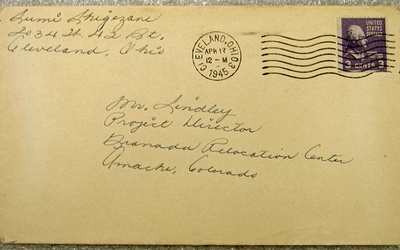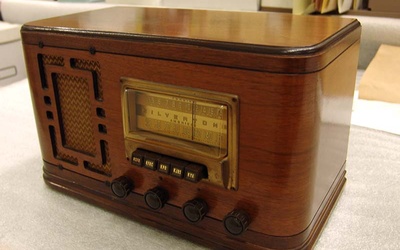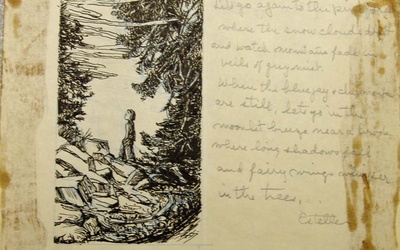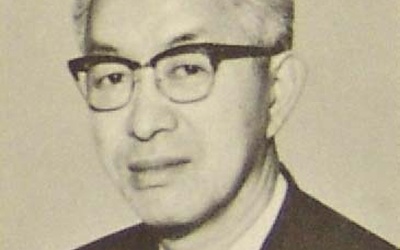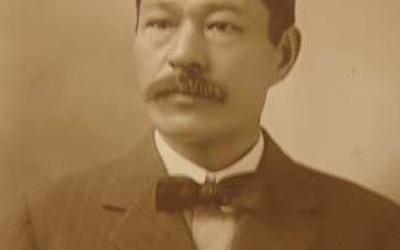Produciendo historia japonesa americana: una exploración a través de los archivos JANM

Saludos ¡Descubre Nikkei! Si bien todos sabemos que Discover Nikkei es un proyecto global en línea, ¿sabías que en realidad tiene su sede en el Museo Nacional Japonés Americano (JANM) en Los Ángeles, California? Para aquellos de ustedes que nunca han tenido la oportunidad de visitar JANM (comúnmente pronunciado ja-num ), les recomiendo encarecidamente que pasen por aquí cada vez que estén en el sur de California. Y aquellos que estén cerca, deberían considerar la posibilidad de ofrecerse como voluntarios: ¡definitivamente es cierto cuando dicen que puedes obtener mucho más de lo que aportas!
Durante los últimos meses, he estado en una “asignación especial” en JANM, que afortunadamente incluye acceso completo a la colección permanente de 80.000 artículos del museo. Mi trabajo ha consistido en perfilar individuos únicos que compliquen la “gran narrativa” de la historia japonés-estadounidense. Idealmente, esta investigación eventualmente se utilizará en futuras exhibiciones públicas en el museo. Como historiador y fanático de todo lo antiguo y nostálgico, esto es lo que me interesa.
En esta serie Discover Nikkei, espero compartir algunas de estas historias más memorables y brindarles a los lectores de Discover Nikkei una mirada “detrás de escena” a algunos de los fascinantes recursos primarios que JANM tiene en su colección permanente. Examinaré algunos ejemplos únicos de cómo se crea, registra y difunde la fachada pública de la historia japonés-estadounidense aquí en JANM. Pero quizás lo más importante es que también intentaré examinar cuán fácil es perder la historia y cuán difícil es encontrarla.
Consulta partes de la colección del museo en línea >>
Historias de Esta Serie
Part 5 of 5 – History is Found: Sumi and Masao Shigezane
31 de mayo de 2012 • Dean Ryuta Adachi
Over the previous four installments of this series, I have attempted to demonstrate many of the ongoing issues here behind-the-scenes at the Japanese American National Museum. We are fortunate to have so many priceless artifacts that help tell the remarkable history of Japanese people in the United States, but for every Namyo Bessho citizenship record, there are countless Joyce MacWilliamson radios. Furthermore, even for all properly documented items we have, it truly is beyond our ability and capacity to go …
Part 4 of 5 – History is Lost: Joyce MacWilliamson
24 de mayo de 2012 • Dean Ryuta Adachi
To this point, we have examined three exceptional figures from the Japanese American community with remarkable stories and records. However, the sad truth is that for every item that we can properly describe, there are countless others that we can’t. In 1999, JANM received a curious donation offer from Ms. Joyce MacWilliamson of Beaverton, Oregon: Joyce MacWilliamson’s father Ramon “Mac” MacWilliamson took temporary ownership of a shortwave radio belonging to the 17 year old son of a Japanese American acquaintance. …
Part 3 of 5 – History is Ignored: Estelle Ishigo
17 de mayo de 2012 • Dean Ryuta Adachi
Estelle Ishigo is a name that may be familiar to many of you. She was one of the few whites to be incarcerated with Japanese Americans during World War II. Estelle voluntarily chose to enter Heart Mountain Relocation Center in order to stay with her Nisei husband, Arthur Ishigo. She authored the book Lone Heart Mountain (1972) and was the subject of Steven Okazaki’s Academy Award winning film Days of Waiting (1990). While Ishigo’s artwork is highly acclaimed in Japanese …
Part 2 of 5 – History is Told: S. John Nitta
10 de mayo de 2012 • Dean Ryuta Adachi
The second part of this series will tell the story of another fascinating individual with a tremendous contribution to Japanese American history. Shigeru “John” Nitta was born in Seattle in 1911, but moved to Japan as a child due to his father’s illness. He eventually returned to the United States (specifically Southern California), where he graduated from San Pedro High School in 1933. He soon moved back to Japan and studied chick sexing, which had recently been established and legitimized …
Part 1 of 5 – History is Made: Namyo Bessho
15 de diciembre de 2011 • Dean Ryuta Adachi
While not exclusively the case, we can simply surmise that fascinating individuals with fascinating life events make fascinating history. To appropriate Laurel Thatcher Ulrich’s famous phrase, well-behaved Japanese Americans seldom make history. From Fred Korematsu to Toyo Miyatake to Yuri Kochiyama, the Japanese Americans whose lives are memorialized in our exhibitions are primarily those who went against the grain and followed their beliefs. Although the vast heterogeneity and hybridity of Japanese Americans across three different centuries makes it difficult to …

